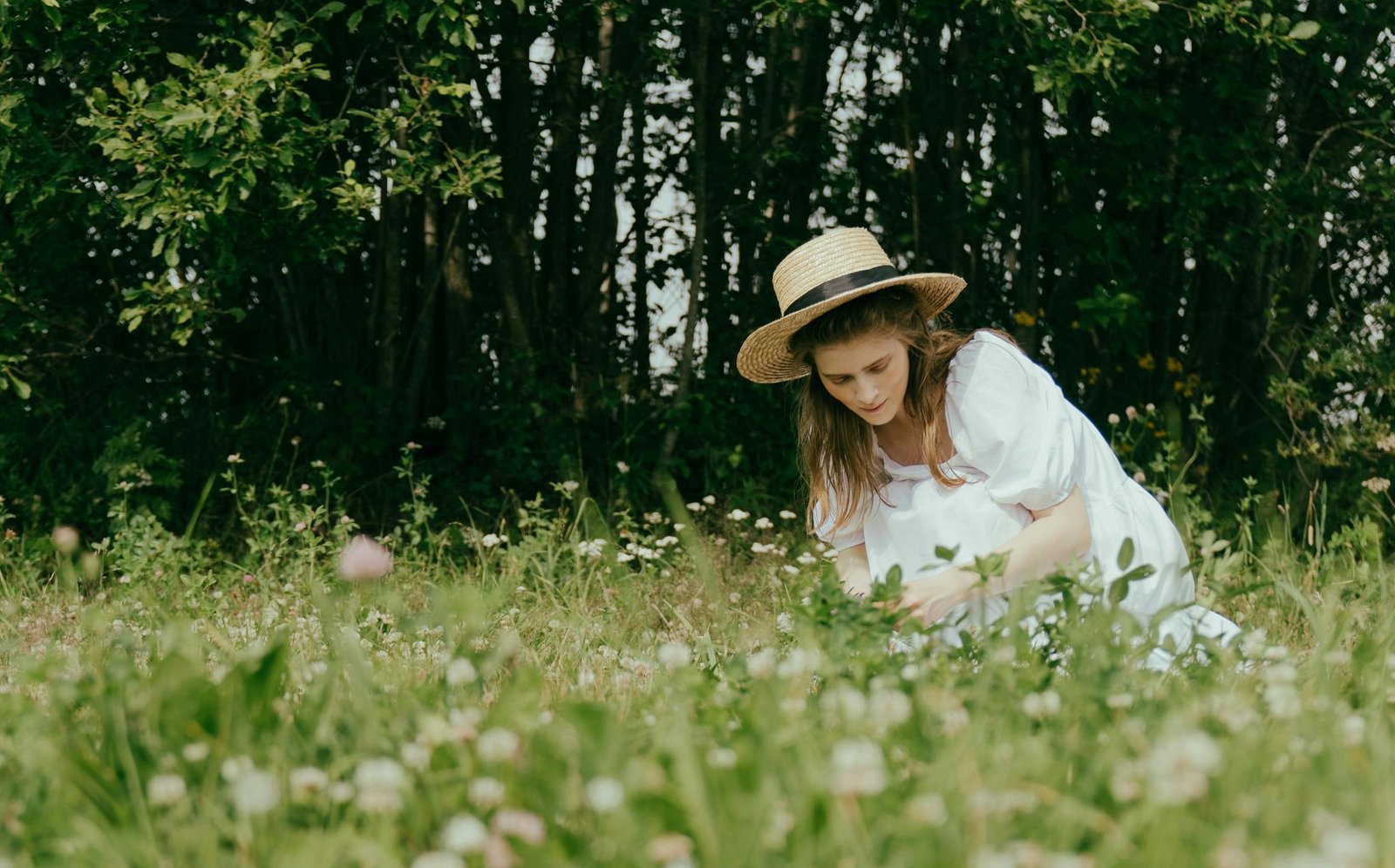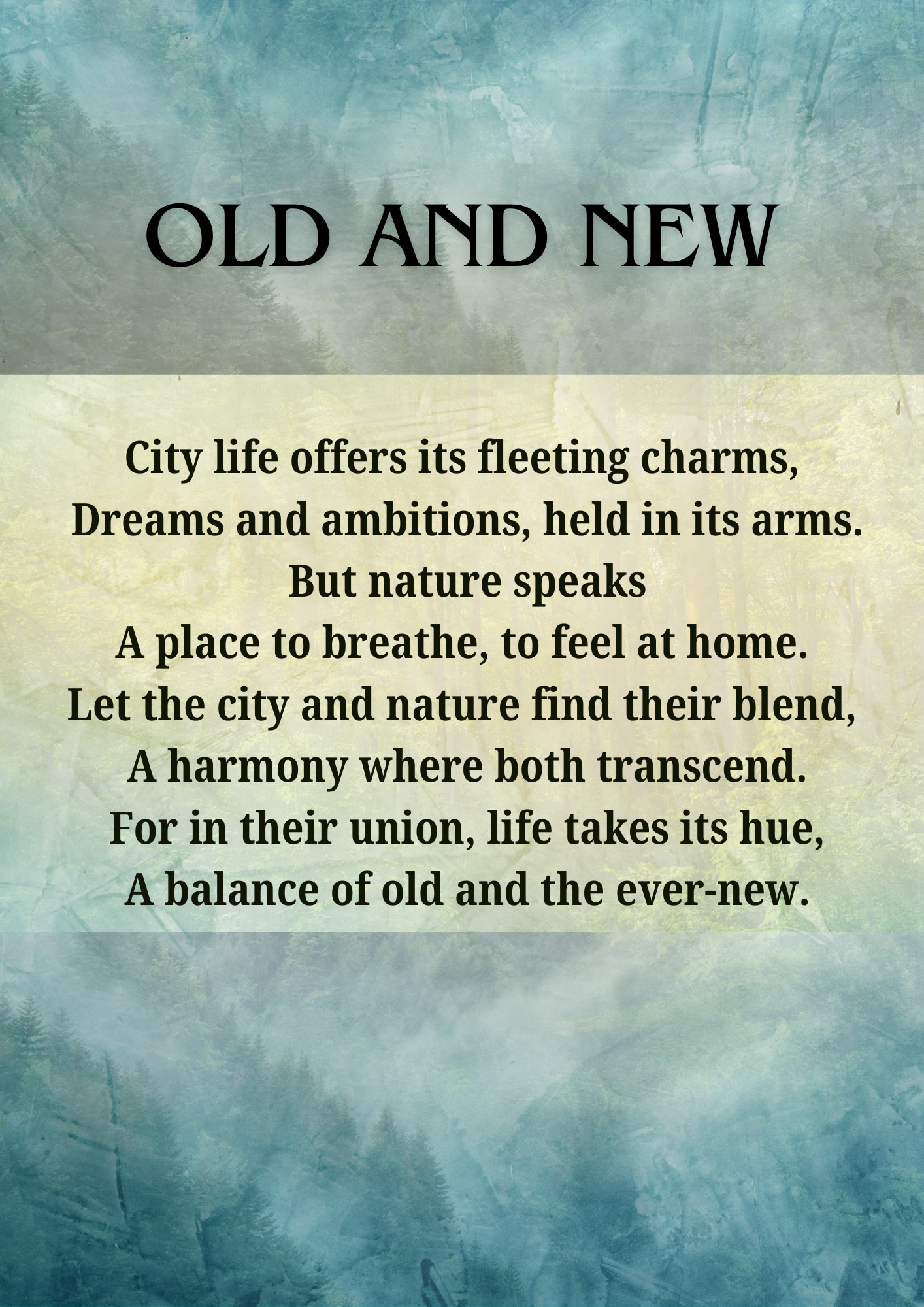Article:
The relationship between humans and the natural world dates to the dawn of humanity. Nature, in all its diverse forms, has always been cherished as a refuge for both the mind and body. The very existence of life is related to the interplay between nature and humanity. In fact, so much can be mentioned about the role of nature and nurture in our lives. Every unit of life must face this process consciously or subconsciously to become what we become. So, it is obvious that the very thing from where life emerges must have the potential to heal and not disturb.
The concept of healing mentally boils down to a concept that is nothing but overall healing. If you have the mental balance, the ability to think right, and the ability to feel fine, you are healed. From ancient philosophies to contemporary psychological research, the belief that nature has healing properties is a widely accepted truth, backed by both personal experiences and scientific studies.
To surrender to something omnipresent, something that embraces and creates your self has a power, power to protect, preserve, and make you capable of continuing through the abyss, however dark it is.

It is strange how recently, nature therapy has gained recognition as a scientifically supported method for improving mental health when this should have been the only known factor. As Ralph Waldo Emerson once said, “In the presence of nature, a wild delight runs through the man, in spite of real sorrows.”
This write-up delves into the science behind nature therapy, its benefits, and its transformative potential for mental well-being. To begin with, let us first understand what is meant by Nature Therapy.
What is Nature Therapy?
Nature therapy, or ecotherapy, encompasses therapeutic practices that involve interacting with natural settings. So, when we are talking about some practices that help us heal, it hints at something, that makes our mind and body align with something that works positively, giving or leading us to a possibility that has a desired consequence. In this regard, why and when do we suffer, if that area is looked into, a host of reasons would surface and let us also understand the reasons are perceived by individuals in their own ways. However, with such a huge plethora of not feeling right, how is it that nature and certain very simple practices can heal up so deep it’s a question for which the answer is only in the practices.
One needs to be in that place to realize and internalize. Let us now take a look at some of the practices. This can include activities such as forest bathing (shinrin-yoku), horticultural therapy, adventure-based counseling, or simply spending mindful time outdoors.
Unlike traditional therapy, nature therapy highlights the healing power of nature on mental health through direct engagement with the environment. Richard Louv, in his book ‘Last Child in the Woods,’ introduces the term “nature-deficit disorder” to describe the problems that arise from a lack of connection to the natural world—an issue that nature therapy seeks to address. Imagine a busy professional, burdened by deadlines, stepping into a peaceful forest. The crisp air, the sound of leaves rustling, and the earthy scent provide immediate stress relief. Such experiences illustrate how nature therapy can help restore balance in our chaotic lives. So, to delve into that arena let us now focus on some factoids, which are presented in the next segment in a simplistic way.

The Science Behind Nature Therapy
Reducing Stress and Anxiety
Numerous studies have shown that spending time in nature can significantly lower cortisol levels, the body’s primary stress hormone. A study from 2019 published in Frontiers in Psychology revealed that just 20 minutes in a natural setting can significantly reduce cortisol levels.
Engaging with the outdoors activates the parasympathetic nervous system, which promotes relaxation. Dr. Qing Li, an expert in shinrin-yoku, notes, “Trees and plants naturally release phytoncides that help lower stress hormones and enhance immunity. Nature has a unique way of healing, soothing, and restoring us in ways that are often hard to express but deeply felt.” Have you ever felt your mood lift after a walk in the park? That’s nature working its magic.
Improving Mood
Being surrounded by nature is linked to improved mood and a reduction in depressive symptoms. The “biophilia hypothesis,” proposed by biologist Edward O. Wilson, suggests that humans have an innate connection to the natural world. This connection fosters positive emotions, reduces negative thoughts, and enhances overall mental health. A 2015 study published in Proceedings of the National Academy of Sciences found that individuals who walked in nature for 90 minutes showed decreased activity in the subgenual prefrontal cortex, a brain region associated with rumination and mental distress, compared to those who walked in urban areas. Naturalist John Muir beautifully expressed this sentiment when he said, “Climb the mountains and get their good tidings. Nature’s peace will flow into you as sunshine flows into trees.”
Enhancing Cognitive Function
Spending time outdoors can enhance focus, creativity, and problem-solving skills. Attention Restoration Theory (ART) posits that natural environments help replenish cognitive resources that modern life often depletes. Unlike urban settings, which can be overwhelming, nature offers a serene backdrop that allows our minds to recharge. That said, immersing yourself in nature isn’t always easy. There are numerous challenges and solutions.

Challenges and Solutions
Despite its benefits, nature therapy faces challenges. Now that is surely a situation that comes along with human existence. Resistance would bring a way out or a solution and that too would be a step toward embracing nature’s goodness. Urbanization and technological advancements have distanced many from natural environments. For individuals living in cities, accessing green spaces can be difficult. Moreover, the therapeutic potential of nature is often underestimated due to a lack of awareness, and exactly where we need to deliberately pay attention to.
To address these challenges, initiatives such as urban green spaces, rooftop gardens, and virtual nature experiences can bring nature closer to people. Schools and workplaces can incorporate nature therapy into their routines, encouraging outdoor breaks and nature-based activities.
These facts can be seen reiterated again and again in the expressions of art, through poems, novels, and even cinema.
Here are some movies whose central theme has been how nature protects, nurtures, and brings forth the everlasting newness of life. We put together this list, as through this form it can be reached to an immediate understanding as the message gets reflected and conveyed with immediacy.
Into the Wild (2007)
The true story of Christopher McCandless, who abandons his material possessions to live in the Alaskan wilderness, discovering self-healing and the transformative power of nature.
The Secret Garden (1993, 2020)
This classic story portrays how a neglected garden and its restoration help heal the emotional wounds of a young girl and those around her.
Wild (2014)
Based on Cheryl Strayed's memoir, the movie depicts a woman's solo journey along the Pacific Crest Trail to heal after personal tragedies.
A Walk in the Woods (2015)
Two old friends reconnect and find solace in nature as they hike the Appalachian Trail.
My Neighbour Totoro (1988)
This Studio Ghibli classic uses a lush natural setting and magical creatures to explore themes of healing and joy in difficult times.
The Horse Whisperer (1998)
Nature and animal-assisted therapy are central to the healing journey of a young girl and her traumatized horse.
The Way (2010)
A father embarks on a pilgrimage along the Camino de Santiago, finding solace and perspective in nature after a personal loss.
Tracks (2013)
The true story of Robyn Davidson’s journey across the Australian desert with camels, exploring the healing and transformative power of isolation in nature.
Avatar (2009)
While primarily a sci-fi movie, it also emphasizes the restorative and symbiotic relationship between humans and the natural world of Pandora.
Healing (2014)
Set in a prison environment, the story explores the therapeutic bond between inmates and injured birds, emphasizing nature's role in emotional recovery.
Keeping the objective of the content in place, we can visualize the scene from the movie Avatar where the tree of life generates the power of healing and plants the seed of new beginnings.
So, it is possible to live a life, nature-centric where this advanced world engages us with its technological advancement and lures us in the knotty tangled blocks and wires, far away from nature into something superficial and ad hoc? The answer to it lies in either the one and only future situation or a deliberate life-changing decision before the world ends, let us now see how we can achieve that, if not in totality but in parts, eventually joining it into a healthy whole.

Embracing a Nature-Centric Lifestyle
Nature therapy is not a one-time solution but a lifestyle shift. Regular interaction with nature can profoundly improve mental health. As John Muir aptly put it, “The mountains are calling, and I must go.” Answering this call does not always require grand gestures. Simple practices, such as tending to a garden, watching a sunset, or walking barefoot on grass, can reawaken our connection to the natural world.
Imagine ending a hectic day by sitting under a starlit sky, feeling a profound sense of calm and perspective.
And you sing aloud: Born free, as free as the wind blows, as free as the grass grows, born free to follow your heart. Live free where beauty surrounds you, the world still astounds you each time you look at the sky…
Let us suggest a few books, which may help you to grasp the matter better. They are good reads and good for self-reflection.
- "Forest Bathing: How Trees Can Help You Find Health and Happiness" by Dr. Qing Li
- "Last Child in the Woods: Saving Our Children from Nature-Deficit Disorder" by Richard Louv
- “The Nature Fix: Why Nature Makes Us Happier, Healthier, and More Creative" by Florence Williams
- "Your Brain on Nature: The Science of Nature's Influence on Your Health, Happiness, and Vitality" by Eva M. Selhub and Alan C. Logan
- "Vitamin N: The Essential Guide to a Nature-Rich Life" by Richard Louv
- "Braiding Sweetgrass: Indigenous Wisdom, Scientific Knowledge, and the Teachings of Plants" by Robin Wall Kimmerer
- "The Biophilia Hypothesis" by Edward O. Wilson
- "The Wild Remedy: How Nature Mends Us – A Diary" by Emma Mitchell
- "Nature and Therapy: Understanding Counselling and Psychotherapy in Outdoor Spaces" by Martin Jordan and Joe Hinds
- "The Healing Magic of Forest Bathing: Finding Calm, Creativity, and Connection in the Natural World" by Julia Plevin

Thoughts that we leave you with
Nature therapy bridges the gap between the modern world and our primal roots. It offers a holistic approach to mental health, addressing the mind, body, and spirit. By embracing the healing power of nature, we can counteract the stressors of contemporary life and rediscover our intrinsic harmony with the earth.

As we stand at the crossroads of technological advancement and ecological preservation, it is imperative to integrate nature into our lives. Doing so not only nurtures individual well-being but also fosters a collective commitment to safeguarding the planet for future generations. In the words of Rachel Carson, “Those who contemplate the beauty of the earth find reserves of strength that will endure as long as life lasts.” Let us tap into these reserves and embark on a journey of healing and renewal through nature therapy.


